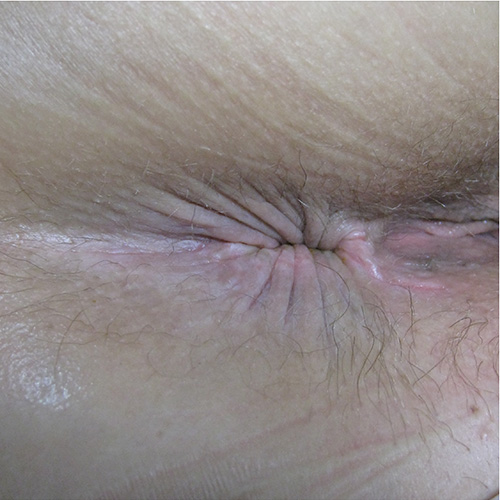Perianal streptococcal dermatitis
Perianal streptococcal dermatitis (also known as perianal streptococcal cellulitis or perianal cellulitis) is uncommon, and mainly occurs in preschool and school-aged children; however, adult cases have been reported. It presents as a persistent itchy and tender erythematous perianal eruption, extending from the anal verge. The eruption can be accompanied by fissures, bleeding, discharge, constipation, and pain with defecation. For a photo of perianal streptococcal dermatitis, see here.
If there are signs of infection in the perianal area (eg crusting, weeping), take a perianal swab to confirm diagnosis (eg isolation of Streptococcus pyogenes [Group A streptococcus]). Antibiotic treatment may be started before results of perianal swabs are obtained in patients with signs of infection. Also consider taking a swab in patients without signs of infection if dermatitis symptoms are severe and have persisted despite appropriate treatment or if there is clinical suspicion of complications. In these patients, only start antibiotic therapy if S. pyogenes is isolated.
While S. pyogenes is susceptible to penicillin, perianal infections treated with a penicillin recur at a high rate. Clinical trials show efficacy for oral cephalosporins.
For a child with perianal streptococcal dermatitis (including children with delayed nonsevere hypersensitivity to penicillins, when cefalexin can be used in most cases1), use:
For a child with immediate (nonsevere or severe) or delayed severe hypersensitivity to penicillins, use:
1clindamycin (child 1 month or older) 10 mg/kg up to 450 mg orally, 8-hourly for at least 5 days2 clindamycin clindamycin clindamycin
OR
1trimethoprim+sulfamethoxazole (child 1 month or older) 4+20 mg/kg up to 160+800 mg orally, 12-hourly for 5 days. trimethoprim + sulfamethoxazole trimethoprim+sulfamethoxazole trimethoprim+sulfamethoxazole
Group B streptococcus (particularly in elderly patients), Group C streptococcus and Group G streptococcus can also be treated with cephalosporins, if these are suspected or identified on the perianal swab.
Perianal streptococcal dermatitis frequently relapses, and children may require prolonged antibiotics (14 to 21 days) or repeated antibiotic treatmentSerban, 2018.
Treat coexisting constipation and anal fissure, if present. See Functional constipation and Anal fissure in the Gastrointestinal guidelines.

